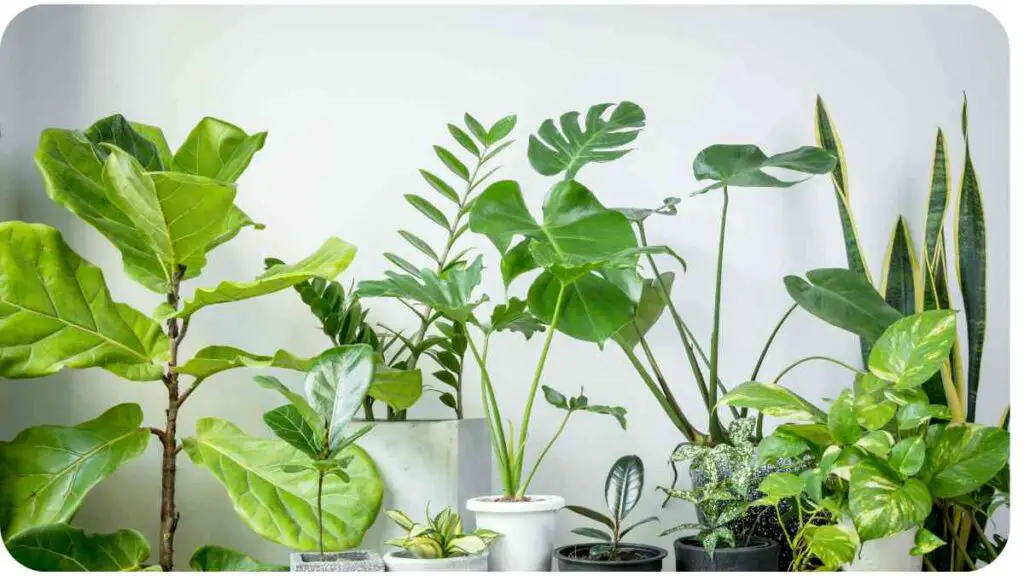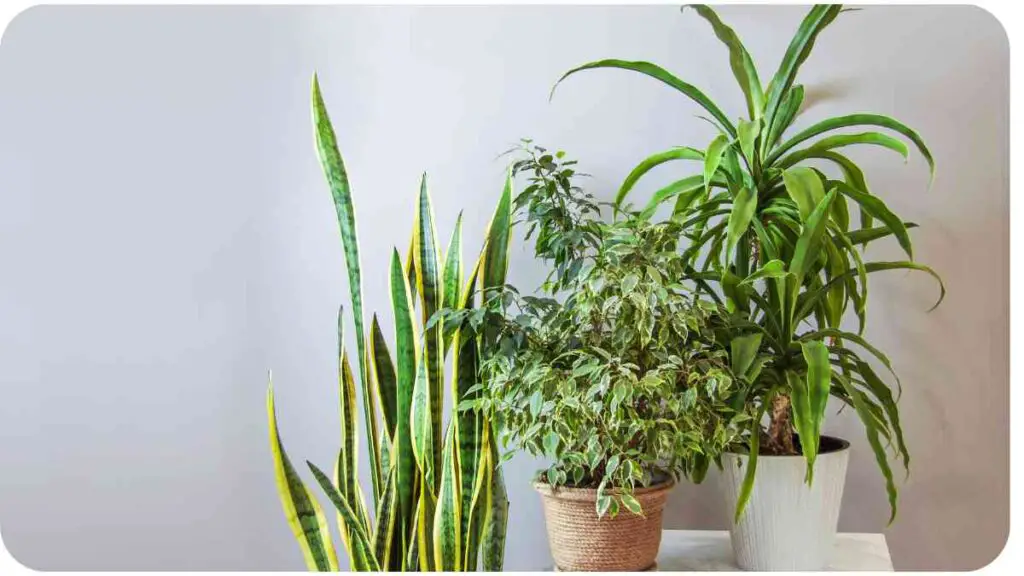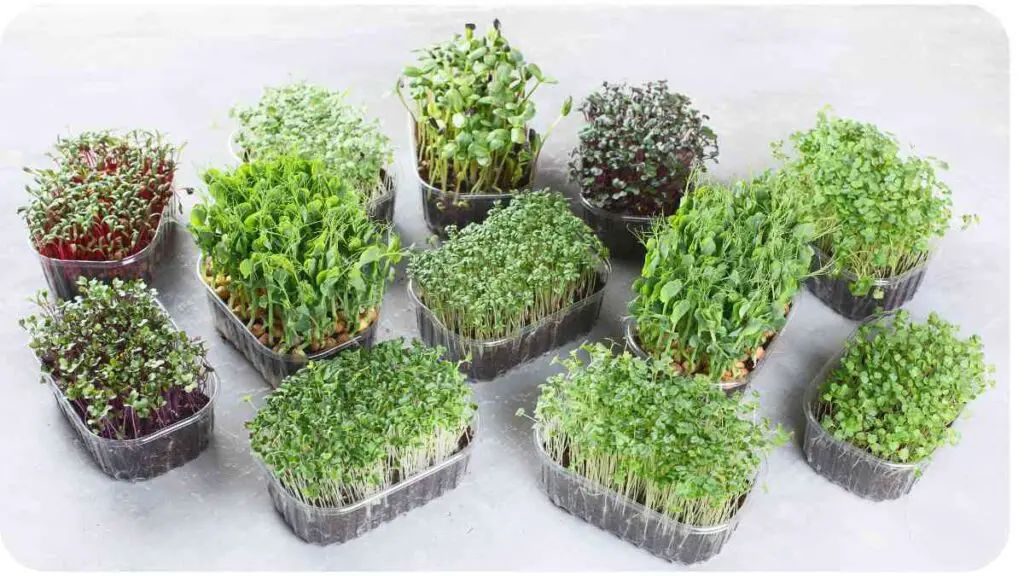House plants bring a touch of nature into our homes, making them a cherished part of our living spaces. But how long can these green companions stay with us? The age of a house plant can vary widely based on its type, care, and environment.
In this article, we’ll explore how old houseplants can get and what you can do to ensure they live a long and healthy life. Whether you’re a seasoned plant parent or a newbie, understanding the factors that influence plant longevity can help you better care for your leafy friends.
| Key Takeaway |
|---|
| Understanding the lifespan of house plants helps set realistic expectations for their care and longevity. |
| Light, temperature, watering, and soil quality are critical factors influencing a plant’s lifespan. |
| Regular maintenance, including pruning and repotting, can significantly extend the life of house plants. |
| Recognizing signs of aging and health issues early allows for timely intervention to prolong plant life. |
| Reviving old plants through specific techniques can rejuvenate them, but sometimes replacement is necessary. |
Factors Affecting the Lifespan of House Plants

Light and Temperature
Light and temperature are crucial for the health of house plants. Most plants thrive in specific lighting conditions and temperature ranges.
Incorporating a variety of houseplants can create a vibrant environment, enhancing your mood and air quality. To learn more about specific plants that are safe for your furry friends, check out this guide on dog-friendly houseplants.
| Factor | Ideal Conditions | Effects of Deviations |
|---|---|---|
| Light | Bright, indirect light | Too much light can cause burn; too little can lead to leggy growth |
| Temperature | 60-75°F (15-24°C) | Extreme cold or heat can stress plants and reduce lifespan |
Plants that receive inadequate light or are subjected to extreme temperatures can experience stunted growth or even die prematurely. Regularly check your plant’s environment to ensure it matches its needs.
Watering and Soil
Proper watering and soil quality are vital for plant health.
| Aspect | Best Practices | Problems with Poor Practices |
|---|---|---|
| Watering | Water when the top inch of soil is dry; avoid waterlogging | Overwatering can cause root rot; underwatering can lead to dehydration |
| Soil | Use well-draining soil; repot every 1-2 years | Compacted soil can hinder root growth and nutrient uptake |
Choosing the right soil and watering regimen can significantly impact a plant’s lifespan. Be attentive to the specific needs of your plant species for best results.
On hot summer days, keeping your dog cool is crucial. Homemade frozen treats can be a refreshing delight for your pet. Discover some tasty recipes for these treats in our article on homemade frozen dog treats.
Pests and Diseases
Pests and diseases can shorten a plant’s life if not managed properly.
| Issue | Signs | Management |
|---|---|---|
| Pests (e.g., aphids) | Sticky residue, visible bugs | Use insecticidal soap or neem oil |
| Diseases (e.g., mold) | Wilting, discolored leaves | Improve air circulation and treat with appropriate fungicides |
Regularly inspect your plants for signs of pests or disease and address any issues promptly to keep them healthy.
Types of House Plants and Their Lifespans

Common House Plants
Many common house plants are known for their longevity.
| Plant | Average Lifespan | Care Tips |
|---|---|---|
| Spider Plant | 5-10 years | Prefers bright, indirect light; keep soil moist but not waterlogged |
| Snake Plant | 10-20 years | Tolerates low light; allow soil to dry out between waterings |
| Pothos | 5-10 years | Thrives in various lighting conditions; water when dry |
Understanding the typical lifespan of common house plants helps in setting realistic expectations and planning for their care.
Practicing yoga with your dog can strengthen your bond while providing relaxation for both. It’s a fun way to incorporate fitness into your routine. To explore the basics and benefits of this practice, visit our article on dog yoga basics and benefits. Stretching together can be rewarding!
Rare and Exotic Plants
Rare and exotic plants can have unique care requirements and lifespans.
| Plant | Average Lifespan | Care Tips |
|---|---|---|
| Orchid | 1-10 years | Requires specific humidity and light; regular feeding |
| Bonsai | 20-100 years | Needs meticulous pruning and care; sensitive to environment changes |
Caring for rare plants can be more demanding, but with the right conditions, they can thrive for many years.
How to Extend the Life of Your House Plants
Proper Care and Maintenance
Consistent care can help extend your plant’s life.
| Care Aspect | Tips for Longevity |
|---|---|
| Pruning | Regularly remove dead or damaged leaves to encourage new growth |
| Fertilizing | Use balanced fertilizers and follow recommended feeding schedules |
Maintaining a regular care routine is essential for keeping your plants healthy and vibrant.
An herb garden is not only aesthetically pleasing but can also elevate your culinary experiences. For tips on how to create a thriving herb garden, check out this informative piece on how to make an herb garden.
Repotting and Soil Management
Repotting helps accommodate plant growth and refreshes soil.
| Repotting Aspect | Recommended Frequency | Benefits |
|---|---|---|
| Timing | Every 1-2 years | Prevents root binding and improves nutrient uptake |
| Soil Type | Well-draining mix | Ensures healthy root development |
Repotting and soil management are crucial for plants that outgrow their pots or deplete the nutrients in their soil.
Signs That Your House Plant Is Aging

Visual Indicators
Aging plants often show specific signs.
| Indicator | Description | Actions to Take |
|---|---|---|
| Yellowing Leaves | Indicates potential nutrient deficiencies or overwatering | Adjust care routine or soil conditions |
| Reduced Growth | Slower or stalled growth may signal aging or root issues | Consider repotting or changing care methods |
Recognizing these signs early can help you take corrective actions to extend your plant’s life.
Health Checkup Tips
Regular health checkups can help catch issues before they become severe.
| Checkup Aspect | What to Look For | How to Address Issues |
|---|---|---|
| Root Health | Look for rot or damage | Trim affected roots and improve soil drainage |
| Leaf Condition | Check for spots or wilting | Adjust light and water conditions |
Frequent health checks can prevent potential problems and keep your plant in top shape.
The backyard is a perfect space for gathering friends and enjoying outdoor activities. From barbecues to game nights, there are countless possibilities. For some exciting ideas, read our guide on what can you do outside your backyard with friends.
Reviving Old House Plants
Techniques and Methods
Reviving older plants involves specific techniques.
| Technique | Description | Effectiveness |
|---|---|---|
| Pruning | Trim back dead or unhealthy parts | Encourages new growth |
| Soil Refreshing | Replace old soil with fresh mix | Improves nutrient availability |
Implementing these techniques can rejuvenate aging plants and potentially extend their lifespan.
When to Let Go
Sometimes, despite best efforts, plants may reach the end of their life.
| Criteria | Indicators | Decision Making |
|---|---|---|
| Persistent Issues | Ongoing health problems despite treatment | Consider replacing the plant |
Knowing when to let go can be a difficult but necessary decision for maintaining a healthy plant collection.
Conclusion
House plants can live for many years with the right care and conditions. By understanding the factors affecting their lifespan and taking proactive measures, you can ensure your green friends stay vibrant and healthy for as long as possible. From adjusting light and temperature to recognizing signs of aging, proper plant care is key to enjoying a long-lasting botanical companion.
Further Reading
The Ultimate Guide to Indoor Plants
This comprehensive guide covers various indoor plants, their care requirements, and tips for maintaining a thriving indoor garden.
How Long Do Plants Live?
Explore different house plants and their expected lifespans, with insights on factors that can influence their longevity.
Longest Living Houseplants
Discover a selection of houseplants known for their longevity and tips on how to help them thrive for many years.
FAQs
How long can house plants live?
House plants can live from a few years to several decades, depending on their type and care. Proper conditions and maintenance play a crucial role in their longevity.
What factors impact the lifespan of a house plant?
Factors such as light, temperature, watering practices, soil quality, and pest management significantly affect a house plant’s lifespan. Each plant species has specific needs that must be met to ensure longevity.
How can I tell if my house plant is aging?
Signs of aging in house plants include yellowing or browning leaves, reduced growth, and persistent health issues despite proper care. Regular inspection and adjustment of care routines can help manage these issues.
What should I do if my plant is not thriving?
If your plant is struggling, first check if it meets its light, water, and soil needs. Make necessary adjustments, such as repotting or changing the care routine, to improve its health.
When should I consider replacing an old plant?
If a plant consistently shows signs of decline despite your best efforts and care, it might be time to consider replacing it. Sometimes, even with optimal care, plants reach the end of their natural lifespan.

For 15 years, Hellen James has worked in the gardening industry as an expert and landscape designer. During her career, she has worked for a variety of businesses that specialize in landscaping and gardening from small firms to large corporations.

